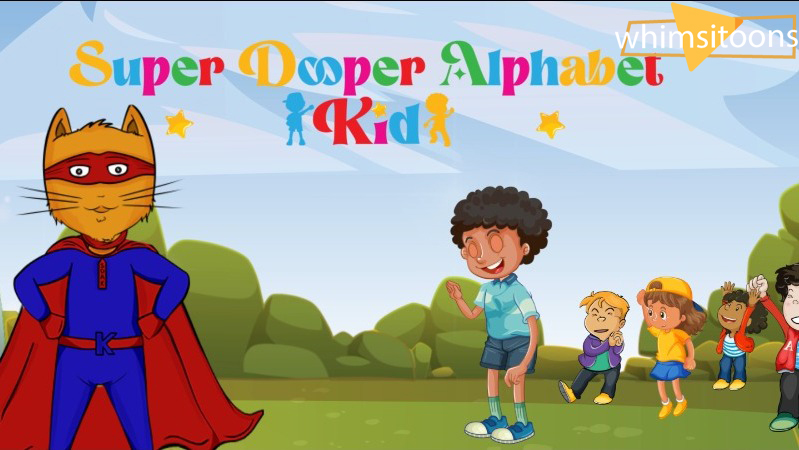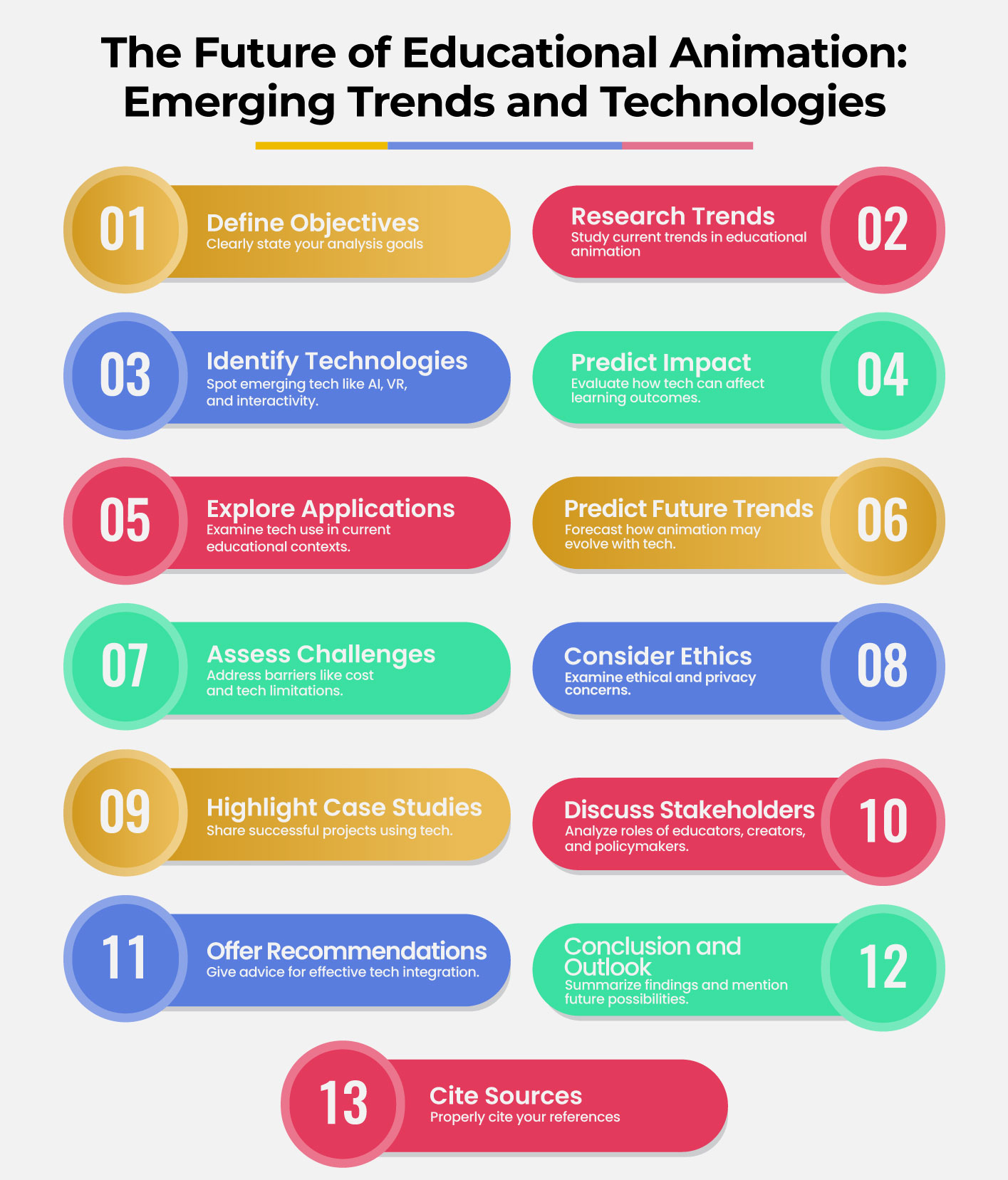Potential of Animated Educational Videos for Kids

Introduction
Hey there, fellow educators, parents, and all-around child enthusiasts! Today, we’re embarking on a colorful journey into the world of Animated Educational Videos for Kids. From the vibrant hues of 2D animations to the breathtaking depths of 3D worlds, these videos aren’t just about keeping the little ones entertained. They are powerful tools that blend fun and learning in a way that captures young minds like nothing else.
The Evolution of Educational Content for Kids
Remember the days when learning was confined to the four walls of a classroom or the pages of a textbook? Well, not anymore! The digital age has transformed education, especially with the introduction of 2D and 3D Animated Educational Videos for Kids. These resources have revolutionized the way children learn, making education an engaging, interactive, and enjoyable experience.
Why Animated Videos?
- Engagement: Animation grabs attention like nothing else, keeping kids glued to the screen and absorbing information.
- Simplified Concepts: Complex ideas are broken down into digestible pieces, making them easier for kids to understand.
- Memory Retention: The combination of visual and auditory elements aids in better retention of information.
- Inclusivity: Animated videos cater to various learning styles and can be particularly beneficial for children with learning disabilities.
The Magic of 2D Animation
Simplicity and Creativity
2D animated educational videos are like digital storybooks come to life. They combine simple, relatable characters with vivid backgrounds, making learning a visually appealing experience.
Key Features
- Flat and Simple: Easy on young eyes and perfect for conveying basic concepts.
- Artistic Styles: Range from cartoonish to beautifully hand-drawn illustrations.
The Power of 3D Animation
Immersive Learning
3D animated videos are the next level in educational content. They provide a more realistic and immersive experience, making complex subjects fascinating for kids.
Why 3D Rocks
- Realistic: Offers a life-like experience that can illustrate scientific and abstract concepts effectively.
- Interactive Potential: Some 3D videos are interactive, allowing kids to engage directly with the content.
Blending Education with Entertainment
Keeping It Fun and Educational
The true beauty of animated educational videos lies in their ability to balance learning with fun. This approach, often termed ‘edutainment’, ensures that children are learning while they are genuinely enjoying the content.
How It Works
- Storytelling: Narratives and stories make learning relatable and memorable.
- Characters: Lovable characters become children’s learning companions.
- Interactive Elements: Quizzes and interactive segments reinforce learning.
The Impact of Animated Videos on Different Age Groups
Tailoring Content for Various Ages
Animated educational videos aren’t one-size-fits-all. Their content and style are often tailored to suit different age groups.
Toddlers and Preschoolers
- Pay attention to fundamental ideas such as numbers, colors, and shapes.
- Bright, colorful animations with simple, repetitive music.
School-Aged Children
- More complex subjects like math, science, and language.
- Story-driven content with relatable characters and scenarios.
Creating Effective Animated Educational Videos: Tips and Tricks
Crafting the Perfect Educational Animation
Creating an animated educational video requires a balance of creativity, educational content, and child psychology.
Essential Elements
- Clear Objectives: Define what the video aims to teach.
- Engaging Script: Write a script that is both informative and entertaining.
- Quality Animation: Good quality animation keeps kids engaged.
- Educational Expertise: Ensure the content is age-appropriate and educational.
Comparative Analysis of Different Animation Styles
As we explore the world of Animated Educational Videos for Kids, we encounter a diverse range of animation styles, each with its unique characteristics and educational strengths. In this section, we’ll delve into various animation styles, comparing their attributes, educational effectiveness, production costs, and appeal to different age groups. This analysis aims to shed light on how each style contributes to the educational experience of children.
Traditional 2D Animation
- Characteristics: Traditional 2D animation, also known as hand-drawn animation, involves creating frames individually, resulting in a flat, linear appearance with a classic, timeless feel.
- Educational Effectiveness: Ideal for storytelling and presenting narratives, 2D animation excels in engaging younger audiences. Its simplicity makes it a great choice for illustrating concepts in literature, social studies, and basic sciences.
- Production Costs: The labor-intensive process of drawing each frame makes traditional 2D animation relatively costly and time-consuming.
- Age Group Appeal: This style has a universal appeal but is particularly enchanting for preschool and early elementary school children who resonate with its storybook-like visuals.
Digital 2D Animation
- Characteristics: Digital 2D animation utilizes software to create animations, offering more flexibility and efficiency compared to traditional hand-drawn methods. It retains a flat appearance but with smoother, more consistent animation.
- Educational Effectiveness: Digital 2D animation is versatile and can adapt to various educational content needs. It’s particularly effective for teaching language skills, math concepts, and basic science.
- Production Costs: More cost-effective than traditional 2D animation, digital 2D can be produced more efficiently while maintaining high-quality visuals.
- Age Group Appeal: Digital 2D appeals to a wide range of ages, especially capturing the interest of elementary and middle school children who enjoy dynamic and vibrant content.
3D Animation
- Characteristics: 3D animation creates lifelike, three-dimensional characters and environments, offering depth and realism, resulting in a more immersive experience.
- Educational Effectiveness: Excellent for illustrating complex scientific and mathematical concepts, 3D animation can bring abstract ideas to life. It’s also highly suitable for historical reconstructions and exploring biological processes.
- Production Costs: Generally, 3D animation is more expensive due to the advanced software, skill level, and time required to create realistic 3D models and environments.
- Age Group Appeal: 3D animation is particularly captivating for older children and teenagers who appreciate the detailed and realistic portrayal of concepts.
Stop-Motion Animation
- Characteristics: Stop-motion animation involves physically manipulating objects in small increments between individually photographed frames, creating the illusion of movement when played as a continuous sequence.
- Educational Effectiveness: Stop-motion can be particularly effective in arts and crafts learning and storytelling. Its tactile nature makes it uniquely suited for educational topics that benefit from a hands-on approach.
- Production Costs: Stop-motion can be costly and time-consuming, depending on the materials used and the complexity of the animations.
- Age Group Appeal: It tends to attract younger children due to its playful and often whimsical nature, but it can also appeal to older students through more sophisticated storytelling and visuals.
Illustrating 2D Animation in Action: ‘Super Duper Educational Video for Kids’
To truly grasp the magic of 2D animation in the world of educational videos, let’s take a closer look at a prime example: “Super Duper Educational Video for Kids” by Whimsitoons. This delightful 2D animated creation encapsulates the essence of blending entertainment with education, making learning an engaging adventure for young minds.
Video Showcase: “Super Duper Educational Video for Kids by Whimsitoons | 2D Animation”
Why This Video Shines:
- Captivating Visuals: The vibrant and colorful 2D animations immediately capture the attention of children.
- Engaging Characters: Lovable characters guide young learners through educational content in a relatable way.
- Educational Content: Complex concepts are simplified and presented with clarity, ensuring understanding.
- Interactivity: The video may include interactive elements that encourage participation and learning.
By watching this video, you’ll witness firsthand how 2D animation can transform educational content into an exciting journey for kids. It serves as a testament to the power of animation in making learning both fun and effective.
The Future of Animated Educational Videos
Innovations and Trends
The world of animated educational videos is constantly evolving, with new technologies and creative approaches emerging regularly.
What’s Next?
- Augmented Reality (AR) and Virtual Reality (VR): Offering even more immersive educational experiences.
- Personalized Learning Paths: Customized content based on individual learning styles and pace.

A Comparison: Traditional Learning vs. Animated Learning
Let’s break down how traditional learning methods stack up against animated educational videos.
| Aspect | Traditional Learning | Animated Educational Videos |
| Engagement | Varies | High |
| Accessibility | Limited | Wide (Internet-based) |
| Customization | Minimal | High |
| Interactivity | Low | High |
| Visual Appeal | Limited | Very High |
FAQs: Unraveling Common Curiosities
Are animated educational videos effective for all subjects?
Absolutely! Whether it’s history, science, math, or language arts, animation can bring any subject to life in a captivating way.
Can these videos replace traditional teaching methods?
While they are an excellent supplement, they work best in conjunction with traditional teaching methods, not as a replacement.
Are there any downsides to using animated videos for education?
If overused or not properly integrated into a broader curriculum, they can become a passive form of learning. Balance is key!
How do I choose the right animated videos for my child?
Look for videos that are age-appropriate, align with educational goals, and come from reputable sources.
Can these videos cater to children with special educational needs?
Yes, many animated educational videos are designed to be inclusive and cater to a variety of learning needs and styles.
Wrapping It Up
Animated educational videos for kids are more than just a passing trend. They are a dynamic, engaging, and effective way to complement traditional education and ignite a love for learning in children. Whether in 2D or 3D, these videos open up a world of possibilities, making education an adventure rather than a chore. So, let’s embrace this colorful world and give our kids the gift of learning, animated style!
FAQs
Q 1: Are animated educational videos effective for all subjects?
Absolutely! Whether it's history, science, math, or language arts, animation can bring any subject to life in a captivating way.rnrn
Q 2: Can these videos replace traditional teaching methods?
While they are an excellent supplement, they work best in conjunction with traditional teaching methods, not as a replacement.rn
Q 3: Are there any downsides to using animated videos for education?
If overused or not properly integrated into a broader curriculum, they can become a passive form of learning. Balance is key!rn
Q 4: How do I choose the right animated videos for my child?
Look for videos that are age-appropriate, align with educational goals, and come from reputable sources.rn
Q 5: Can these videos cater to children with special educational needs?
Yes, many animated educational videos are designed to be inclusive and cater to a variety of learning needs and styles.rn










